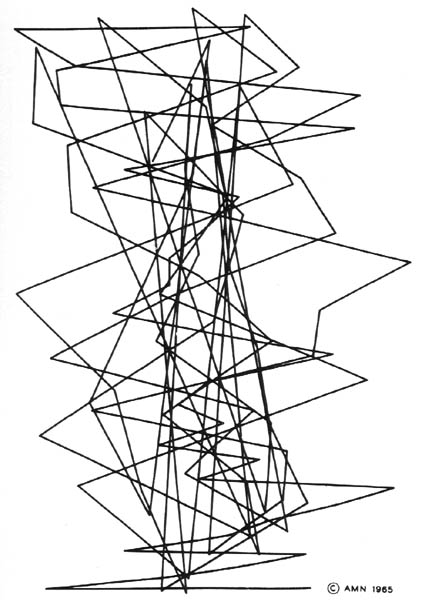“I decided to register the copyright for Gaussian-Quadratic with the Library of Congress. At first they refused since a machine had generated the work. I epxlained that a human being had written the program that incorporated randomness and order. They again refused to regsiter the work, stating that randomness was not acceptable. I finally explained that although the numbers generated by the program appeared ‘random’ to humans, the algorithm generating them was perfectly mathematical and not random at all. The copyright was finally accepted, thereby giving Gaussian-Quadratic of being perhaps the first registered piece of copyrighted art produced with a digital computer.”
–A. Michael Noll, describing his decision to register his 1965 Gaussian-Quadratic with the Library of Congress. A. Michael Noll, “The beginnings of computer art in the United States: A memoir.” Computers and Graphics 19:4 (1995), 41.
